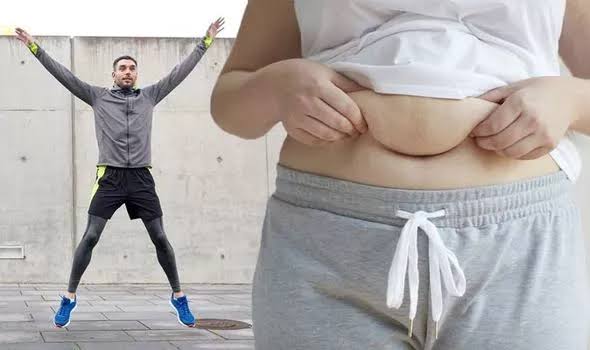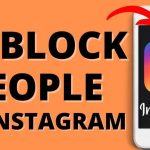Jorge Cruise, a celebrity trainer and best-selling author, isn’t afraid to talk about belly fat — and how he carried a lot of it when he was 40 pounds overweight years ago. “Belly fat robs us of confidence at any age,” Cruise, who is approaching 50 and has a very flat stomach, says. “But, more importantly, our waistline is our lifeline, especially as we get older.” You can have hip fat, butt fat, and arm fat while remaining relatively healthy. However, if you have belly fat, it will devastate your health.”
Belly fat, specifically visceral fat, is harmful to your health, according to researchers. This belly fat can cause health problems such as cardiac disease, type 2 diabetes, cancer, dementia, and stroke. Furthermore, it is a predictor of premature death. According to National Institutes of Health researchers, this type of fat affects the health of millions of Americans, with more than half of U.S. adults suffering from it.
It’s safe to assume that you’re one of them if your belly button juts out, though a more precise way to tell if you’re at risk would be to measure yourself. Bad belly fat is indicated by a waist measurement of 35 inches or more for women, or 40 inches or more for men.
Some say that the only way to lose belly fat is to make significant changes to one’s diet and exercise routine, and others agree. Cynthia Sass, a private practice dietitian who specializes in nutrition for mental and physical performance and longevity, says, “The ideal approach involves addressing your overall lifestyle, including eating a balanced diet of whole, naturally fiber-rich foods, being regularly active, prioritizing sleep, not drinking excessively, and managing stress.”
Eliminating belly fat through exercise
Aerobic exercise, which includes walking, running, and swimming, has been shown to aid in calorie and fat loss when practiced regularly and consistently. However, HIIE, also known as HIIT (high-intensity interval training), is a more effective form of exercise because it produces visible results in a shorter period of time.
Short bursts of high-intensity exercise are followed by shorter periods of lower-intensity exercise throughout an HIIT workout, which lasts for 30 minutes at most. Walking or running at a slow pace, then picking up the pace, and repeating, is an example of interval training. Aerobics, cycling classes in the style of boot camp, and other similar programs that alternate between low, medium, and high intensity work are also acceptable.
Cruise, author of The Belly Fat Cure, claims that HIIT makes fat burning a constant process, even when you’re not actively exercising. To speed up your metabolism, melt fat, and trim down, Cruise suggests an eight-minute daily workout that alternates between low-intensity yoga moves and high-intensity ones. Cruise argues that HIIT yoga provides the same metabolic benefits as conventional weight training and cardio without the need for a gym, the expense of equipment, or the risk of injury.
The food you eat is also important.
To quote Michele Promaulayko, author of Sugar Free 3: The Simple 3-Week Plan for More Energy, Better Sleep, and Surprisingly Easy Weight Loss!, “You can’t out-exercise a bad diet” (2019). Both maintaining a healthy diet and engaging in regular physical activity go hand in hand. If you want a flatter stomach after the age of 50, try these dietary changes:
Reducing your sugar intake is a good idea.
According to Promaulayko, sugar, especially dietary sugar that is not readily apparent, is one of the primary causes of obesity and, more specifically, abdominal obesity. Since we only require a small amount of sugar for energy, excess sugar is a major factor in belly fat and fat accumulation elsewhere. Fat is stored for later use. And the truth is, between added and hidden sugars, we’re getting way more than we need,” Promaulayko says. According to the USDA, the average American consumes about 40% of their caloric intake from sugar, despite the fact that their recommended daily intake is only 10%.
Sass also suggests reducing your intake of sugary, empty-calorie foods like cookies, doughnuts, muffins, and white bread, all of which can add extra pounds around the middle.
Eat a plant-based diet
Sass suggests following a plant-based diet for optimal health. Her recommendation: incorporate more monounsaturated fat-rich plant foods like avocado and avocado oil, extra virgin olive oil, whole Mediterranean olives and olive tapenade, nuts and nut butter into your diet. She also notes that improved insulin sensitivity and decreased inflammation, both of which are associated with belly fat, have been linked to the consumption of these healthy fats.
Sass also emphasizes the importance of pulses, a group of foods that includes beans, lentils, peas, and chickpeas. She says that pulses are great for controlling blood sugar because of the special combination of fiber and plant protein they contain. Regular consumers of pulses have smaller waist circumferences and a lower risk of obesity by more than 20 percent.”
The loss of abdominal fat is greater in those who consume whole grains as opposed to refined grains, according to the findings of the aforementioned studies. While soluble fiber is essential, Sass notes that “whole grain eaters also experienced greater improvements in C-reactive protein, a blood marker of inflammation that is tied to belly fat.” Over the course of five years, visceral fat was reduced by nearly 4% for every 10-gram increase in soluble fiber consumed daily, according to a study cited by Sass. Pulses are a great energy supply. In addition to oats and avocados, you can get your soluble fiber fix from fruits and vegetables like oranges, apples, pears, figs, broccoli, brussels sprouts, sweet potatoes, and avocados.”
Try out some cyclical fasting
Brief continuous fasts are one type, while others include time-restricted eating (where you only eat during a certain window of the day) and alternate-day fasting (where you limit calories to 500 or 600 on two nonconsecutive days of the week). It has been shown that intermittent fasting is effective at reducing belly fat, she says. However, the key to successful weight loss is what you eat when you’re not fasting.
Cruise says that since adopting an intermittent fasting diet, he has never felt better. He goes without food for 20 hours a day and then eats a full, traditional meal once he breaks his fast. His “flat belly meals” consist of high-fiber chia seeds, almond milk, avocado oil, and stevia, a natural sweetener, and are consumed as snacks during his 20-hour fasts. They satisfy your appetite without breaking your fast, as Cruise puts it. The end result is a decrease in overall body fat and elimination of hunger pangs.






